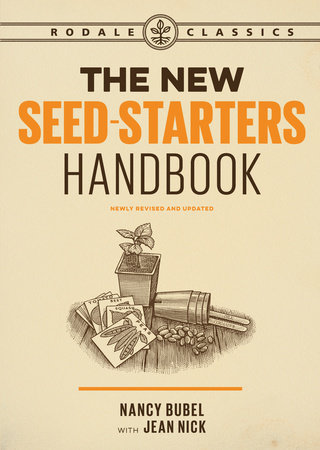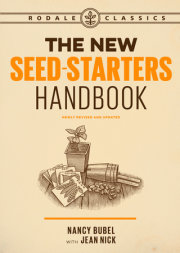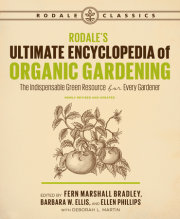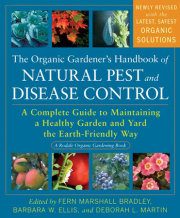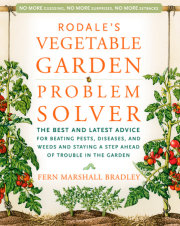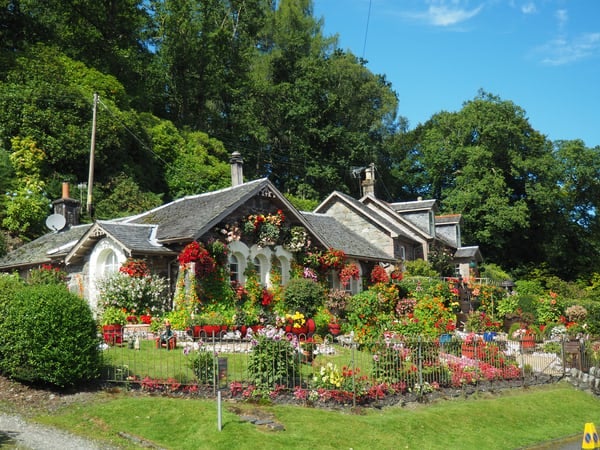SECTION ONE
STARTING SEEDS INDOORS
To own a bit of ground, to scratch it with a hoe, to plant seeds and watch the renewal of life–this is the most commonest delight of the race, the most satisfactory thing a man can do.
–Charles Dudley Warner
WHY START YOUR OWN PLANTS FROM SEEDS?
Security and adventure might be considered opposites in some situations, but the gardener who raises plants from seed can experience both. Security–that confidence in the future that springs from one's own ability, forethought, and preparation–and adventure–the soaring sense of "anything is possible" and "there are so many interesting things to try"–are well known to those who grow new varieties, experiment with new methods, and save their own seeds.
Skill in raising vegetable plants from seed is the very cornerstone of gardening independence. Choice of seeds and careful handling can bring you not only earlier harvests but also better vegetables. You can select varieties of food known to keep or process well so that the winter season, for which we gardeners are always planning, will be a time of abundance. Likewise, good eating will be yours all summer long from the selection of fresh vegetables you've planted for their superior quality.
THE REASONS
I suspect that I'd continue to raise my own seedlings even without a good excuse, because I enjoy the process. But when I stop to think about it, I realize that there are all kinds of good reasons for growing one's own plants from seed.
Earlier harvests. You can get a much earlier start in the garden, and therefore put fresh food on the table sooner, when you've grown cabbage, tomato, eggplant, and pepper plants indoors for setting out when weather mellows. The sooner you can begin picking from your garden, the greater your yield for the year.
Greater variety. Varieties of plants offered by commercial seedling vendors represent but a tiny fraction of the possibilities open to you as a gardener. Buying started plants severely limits your options for raising vegetables of special flavor, insect or disease resistance, or extra nutritional value. If, for example, you want to grow late-blight-resistant tomatoes such as 'Plum Regal', 'Mountain Magic', and 'Mountain Merit', you'll have to start with seeds. Looking for special gourmet foods like globe artichokes, watercress, or Japanese melons? It's back to the seed catalogs. Peppers that are hot, but not too hot? Start your own Hungarian wax plants. Delicious, mild, sweet 'Golden Acre' or 'Glory of Enkhuizen' cabbage? You need to start those with seeds.
Stronger seedlings. Seedlings you've grown yourself can be super seedlings. If you do all the right things at the right times, you'll have the best that can be grown, and you'll know that your plants have well-developed roots growing in good soil that hasn't been hyped with chemicals. You can even plant organically raised seeds in organic seed-starting mix to give your plants an extra start on excellence.
Healthier seedlings. By raising your own plants, you minimize the chance of introducing soilborne diseases to your garden. Clubroots and yellows that affect cabbage, along with anthracnose, tobacco mosaic, and wilt, are some examples of plant diseases you may avoid importing if you grow your own. Of course, you must use uncontaminated seed-starting mix and, in the case of mosaic in pepper, eggplant, and tomato seedlings, avoid handling tobacco around the plants.
Cost saving. You'll save money. For the price of a dozen greenhouse tomato plants, you can buy a couple of seed packets–each of which will give you plants to share or to sell, or extra seeds to save for the following year. But because so many interesting plants can be grown from seed, once you start raising seedlings, you might find that you tend to put some of that saved money back into seeds of other kinds. Since you're likely to eat even better as a result, you may well consider that you're still far ahead.
Satisfaction. Creative satisfaction ought to count for something, too. From settling a well-chosen seedling in a pot of its own carefully prepared seed-starting mix and watching it grow greener, sturdier, and leafier, to picking and eating the peppers, eggplant, or other nutritious food the mature plant finally bears, you've been involved all the way. You can see that your skillful care has made a difference.
Some varieties of vegetables and flowers can only be grown from seed.
Enjoyment. At the very least, planting seeds indoors is a good cure for the winter doldrums–those bleak, cold days when February seems like a permanent condition and you feel you simply must do something to nudge the season into turning. Choose your earliest plantings judiciously, though. You don't want them to be past their prime when you set them out in the garden. Onions, chives, peppers, certain wildflowers and perennial plants, and houseplants like coleus and geraniums are good candidates for starting very early.
Copyright © 2018 by Nancy Bubel with Jean Nick. All rights reserved. No part of this excerpt may be reproduced or reprinted without permission in writing from the publisher.

